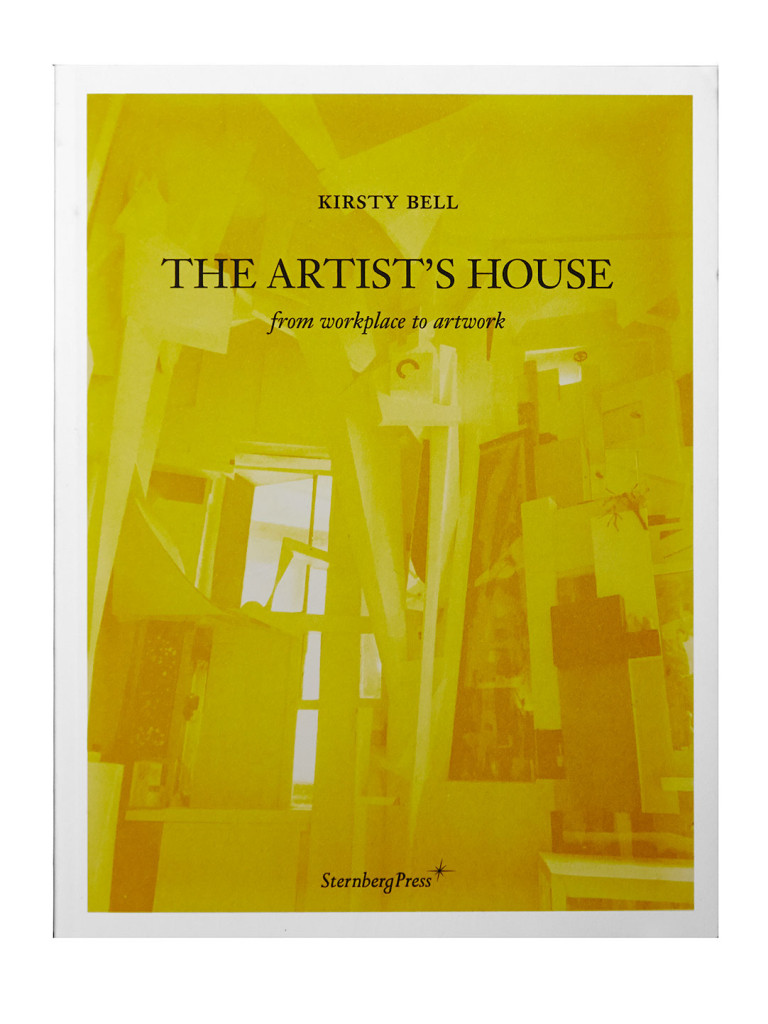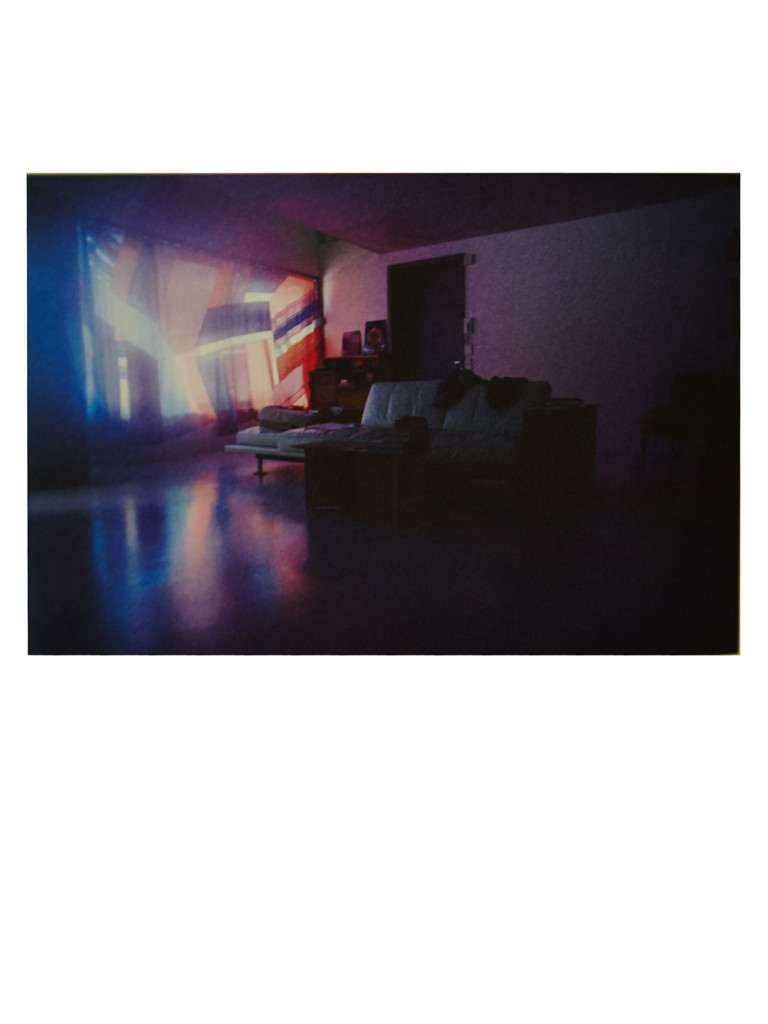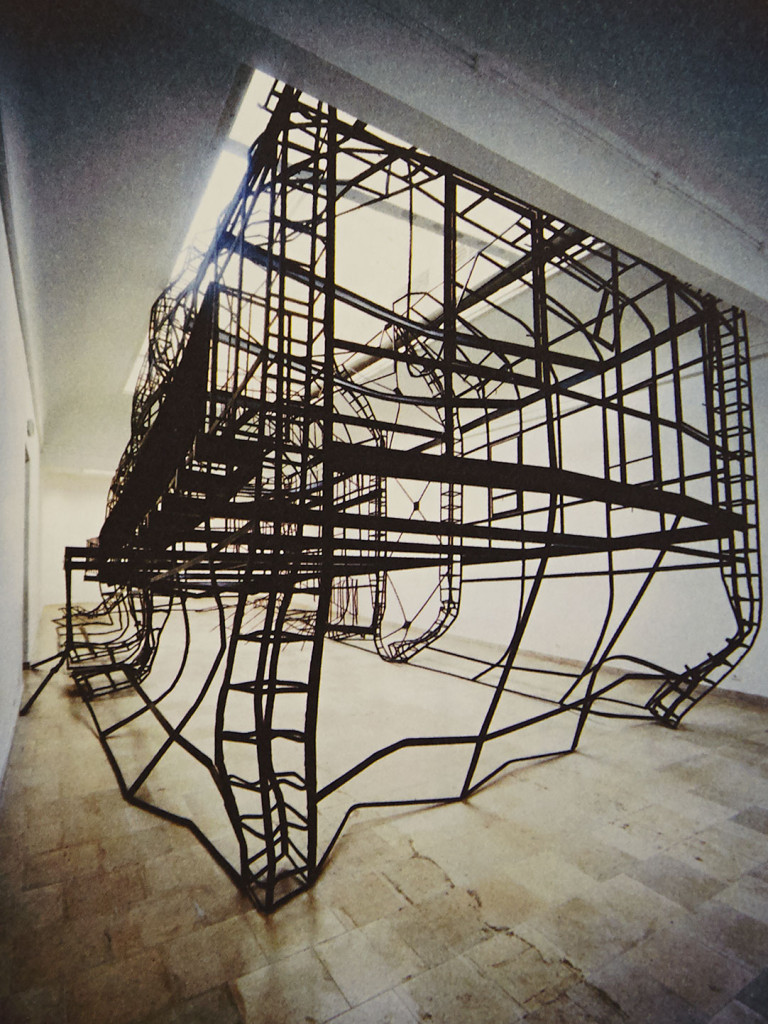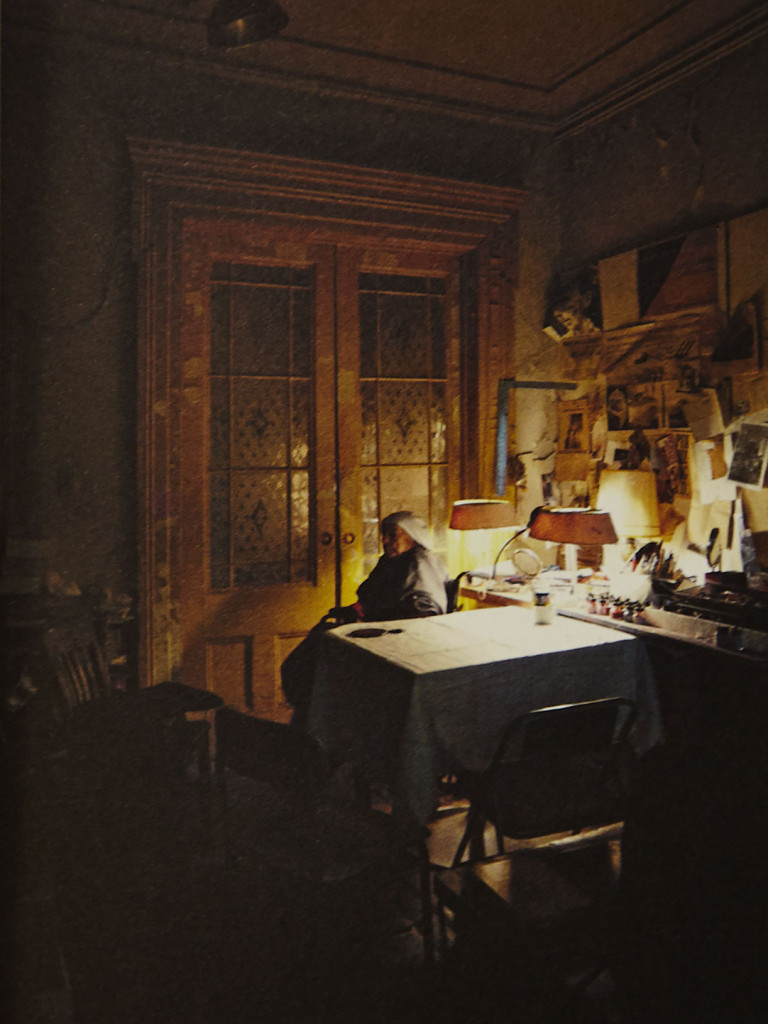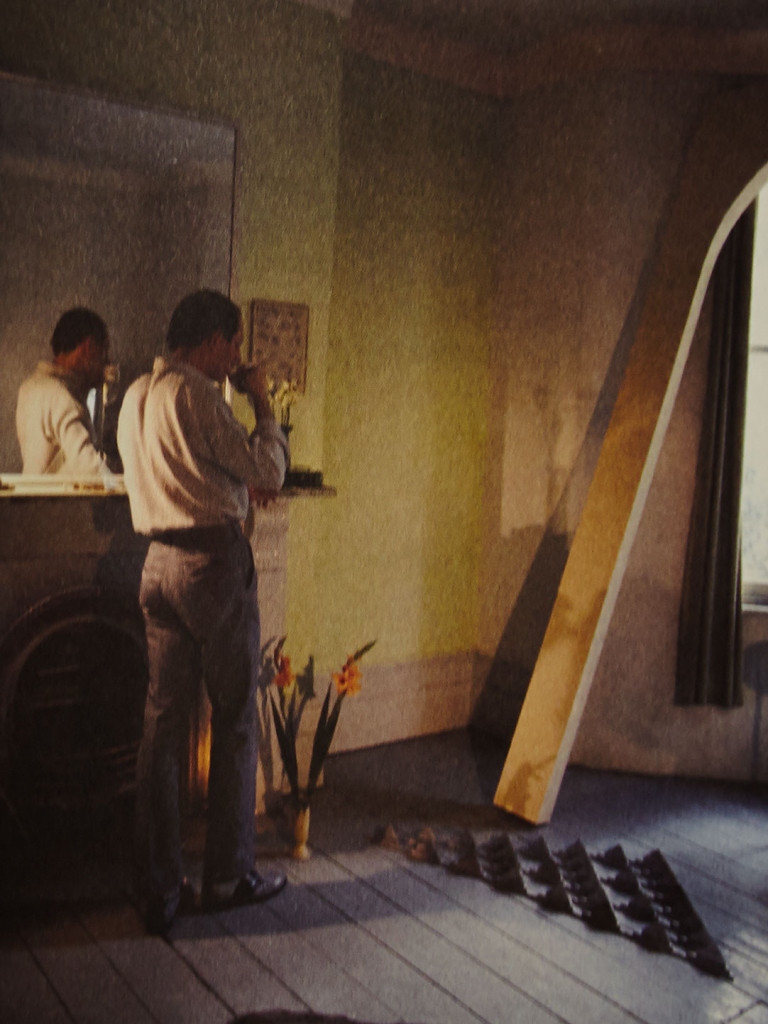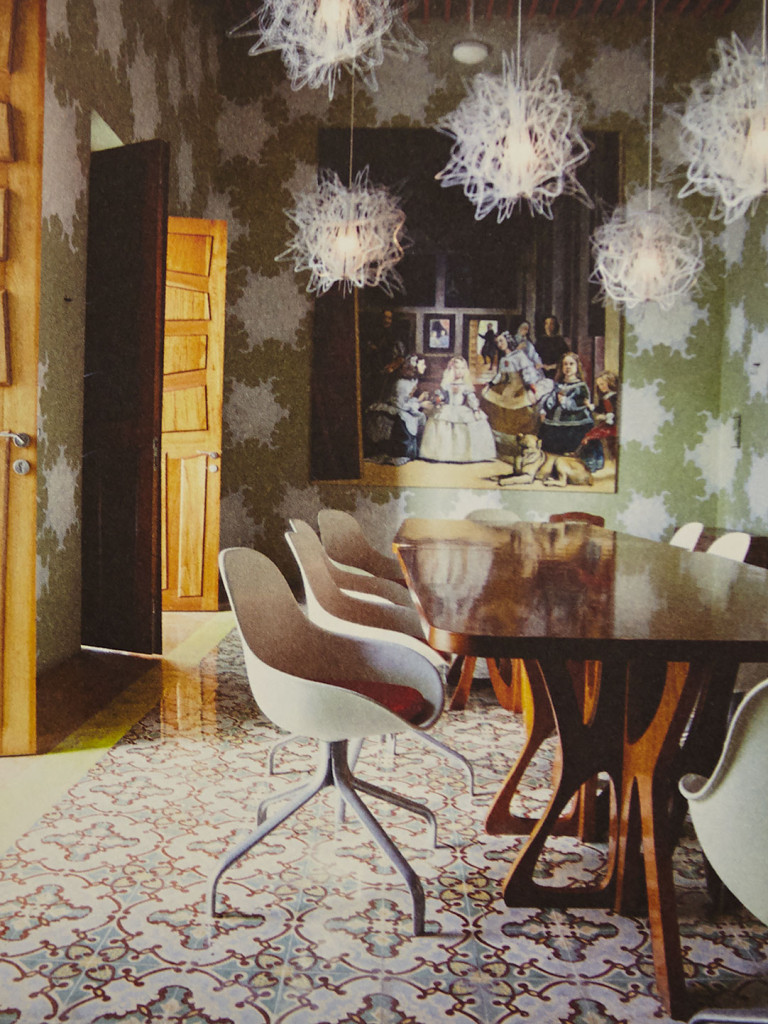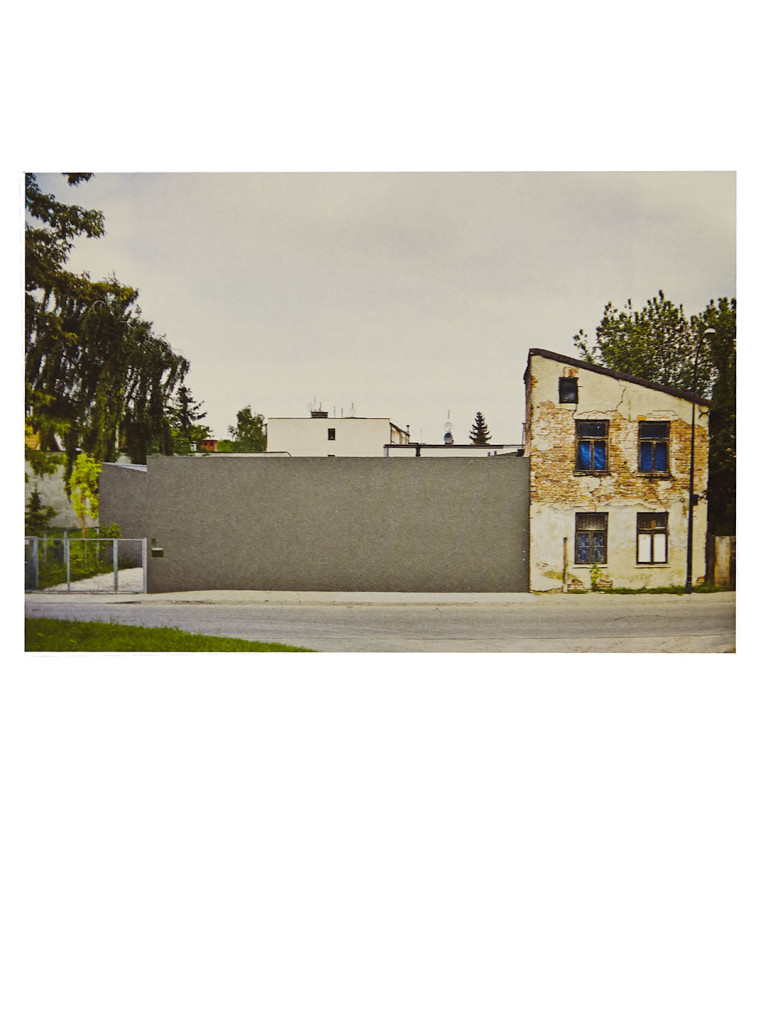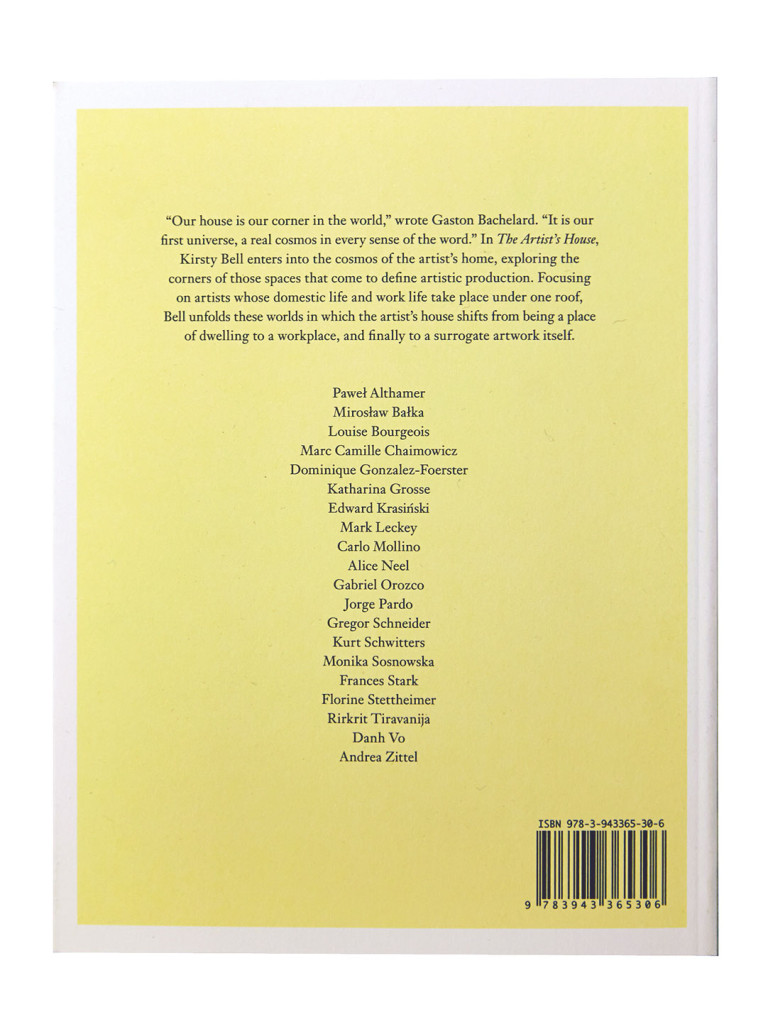Book Review: The Artists House by Kirsty Bell
The Artist’s House by Kirsty Bell
Publisher: Sternberg
Year: 2013
Softcover
Edition: First
Buy: £29 + shipping
Inside the Homes of Louise Bourgeois, Gabriel Orozco, and 18 Other Contemporary Artists
On the subject of the home as a workplace, art critic Kirsty Bell suggests that for the artist, the freelancer, and the homemaker as well, “there isn’t a true division of when our work day ends and our evening of relaxation begins.” She explains, “that’s because we’re all constantly available and communicating. That’s very new and radical!”
Inspired by this idea, and, supported by a grant from the Warhol Foundation, Kirsty set out on a three year task to explore the relationship of the live/work space and how it affects the lives and works of 20 contemporary artists in the United States, Mexico, the UK, Poland, Germany, France, and the Netherlands.
She chose artists whose work she admired and consciously focused on, no matter how talented, just how visually ordinary most of their homes were, and how these spaces are a birthplace for new ideas as well as nurseries for the subsequent creations.
Through photographs and site visits she examines and documents how the coexistence of work space and living space affect the artist and the creative process.
When she told her colleagues about the book, she confesses “they all kind of assumed it would be a glossy, coffee-table picture book of trophy homes of successful male artists. But that,” Bell says, “wasn’t what I wanted to do at all.”
In-depth analyses of these contemporary examples—including Jorge Pardo, Mirosław Bałka, Danh Vo, Gregor Schneider, Frances Stark, Marc Camille Chaimowicz, Dominique Gonzalez-Foerster, Paweł Althamer, Mark Leckey, Monika Sosnowska, Gabriel Orozco, Rirkrit Tiravanija, and Andrea Zittel—are contextualized by key artists of the twentieth century such as Kurt Schwitters, Alice Neel, Edward Krasiński, Carlo Mollino, and Louise Bourgeois.
In seeking a way to best illustrate the work aspect vs the domestic one, Bell divided the 20 homes she visited into five distinctive chapters. Each chapter, dedicated to, a different physical aspect of the dwelling:
Unmade Beds: Dwelling and Dreamspace
The Kitchen Table: The House as Workshop
Doors and Windows: Toward a Total Interior
Outside Walls: The House as Sculpture
Leaving Home: From House to Exhibition
Bell, explains, “I was looking for a way to articulate the working relationship with the domestic structure,” she says. “The chapters bring you from the very intimate heart of the house [“Unmade Beds”] out into the working practice [“Leaving Home”]. You end up seeing it from a distance, on the outside.”
Kirsty Bell studied art history at Cambridge University before pursuing her interest in contemporary art as an exhibitions assistant at Anthony d’Offay Gallery in London. She has developed close working relationships with artists through her work as an artist’s assistant, as an independent curator, and as gallery director of Gavin Brown’s enterprise in New York. Since arriving in Berlin in 2001, her art criticism—published in such magazines as frieze (of which she is a contributing editor), Mousse, Afterall, Art Agenda,and Art Review, as well as in numerous exhibition catalogues—has focused on the young art community in Berlin.
Review by Nathan Best for ART and SMOKE

